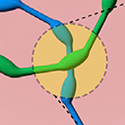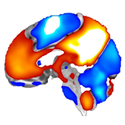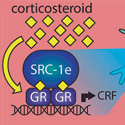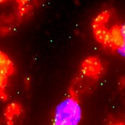Hot Off the Press – March 16, 2023 Summary The brain µ-opioid receptor (MOR) is critical for the analgesic, rewarding, and addictive effects of opioid drugs. However, in rat models of opioid-related behaviors, the circuit mechanisms of MOR-expressing cells are less known because of a lack of genetic tools to selectively manipulate them. We introduce… [Read More]
Hot off the Press
Role of ventral subiculum neuronal ensembles in incubation of oxycodone craving after electric barrier-induced voluntary abstinence
Hot Off the Press – January 26, 2023 Summary We recently introduced a rat model of incubation (time-dependent increase) of oxycodone craving after voluntary abstinence induced by negative consequences of drug seeking. Here, we used the activity marker Fos, muscimol-baclofen (GABAa+GABAb receptor agonists) global inactivation, and Daun02 selective inactivation of putative relapse-associated neuronal ensembles, to… [Read More]
Calcium activity is a degraded estimate of spikes
Hot Off the Press – December 22, 2022 Summary Neurons communicate via electrical signals – spikes – and recording these has provided fundamental information regarding how the brain works. When neurons send electrical signals, several other biological signals occur, notably calcium. Calcium signaling is often used to make inferences about spike activity. However, it was… [Read More]
Incubation of palatable food craving is associated with brain-wide neuronal activation in mice
Hot Off the Press – November 21, 2022 Summary Relapse to reward seeking progressively increases during abstinence, a behavioral phenomenon termed incubation of craving. Mechanistic studies of incubation can lead to novel relapse treatments. However, previous studies have primarily used rat models and targeted region-by-region analyses, and a brain-wide functional atlas of incubation of reward… [Read More]
Synaptic-like axo-axonal transmission from striatal cholinergic interneurons onto dopaminergic fibers
Hot Off the Press – August 15, 2022 Summary Communication between brain cells (neurons) generally involves the unidirectional flow of information. Input from upstream cells arrives onto the dendrites, gets processed in the cell body where it is converted into a rapid electrical wave (action potential) that travels down the axon to trigger the release… [Read More]
Preferential Gs protein coupling of the galanin Gal1 receptor in the µ-opioid-Gal1 receptor heterotetramer
Hot Off the Press – July 8, 2022 Published in Pharmacological Research by Paulo De Oliveira, Ph.D. and Sergi Ferré, M.D., Ph.D. of the NIDA-IRP Integrative Neurobiology Section. Summary We recently demonstrated that complexes (heteromers) of μ-opioid receptors (MORs) and receptors for the neuropeptide galanin of the Gal1subtype (Gal1Rs) localized in the brainstem (in the… [Read More]
Brain lesions disrupting addiction map to a common human brain circuit.
Hot Off the Press – June 15, 2022 Published in Nature Medicine, with contributions by Khaled Moussawi, M.D., Ph.D., Harshwardhan Deshpande, Ph.D., Thomas Ross, Ph.D. and Elliot Stein, Ph.D. of NIDA-IRP. Summary Sometimes regional brain damage (also called a lesion – for example from a stroke) leads to spontaneous remission of addiction – in the… [Read More]
Reversing anterior insular cortex neuronal hypoexcitability attenuates compulsive behavior in adolescent rats
Hot Off the Press – May 27, 2022 Published in Proceedings of the National Academy of Sciences (PNAS) by Dr. Kshitij Jadhav (2019 Predoctoral trainee at NIDA-IRP), Dr. Benjamin Boutrel (Ph.D. supervisor, University of Lausanne, Switzerland) and Dr. Carl Lupica (Project Supervisor, Electrophysiology Research Section, NIDA-IRP). Summary Adolescents are labelled as high risk-taking impulsive individuals… [Read More]
Corticosteroid sensitization drives opioid addiction
Hot Off the Press – April 5, 2022 Published in Molecular Psychiatry by Stephanie Carmack and Leandro Vendruscolo et, al. of the NIDA IRP Neurobiology of Addiction Section. Summary The sharp increase in opioid overdose-related deaths in the United States is a public health emergency. An urgent search to uncover the biological mechanisms of opioid… [Read More]
Involvement of the ghrelin system in the maintenance of oxycodone self-administration: converging evidence from endocrine, pharmacologic and transgenic approaches
Hot Off the Press – February 7, 2022 Published in Molecular Psychiatry by Zhi-Bing You and Lorenzo Leggio et, al. at NIDA IRP. Ghrelin, an orexigenic hormone, has recently emerged as a critical biological substrate implicated in drug reward. However, the reciprocal interactions between the endogenous ghrelin system and drug-motivated behaviors remain to be understood…. [Read More]










